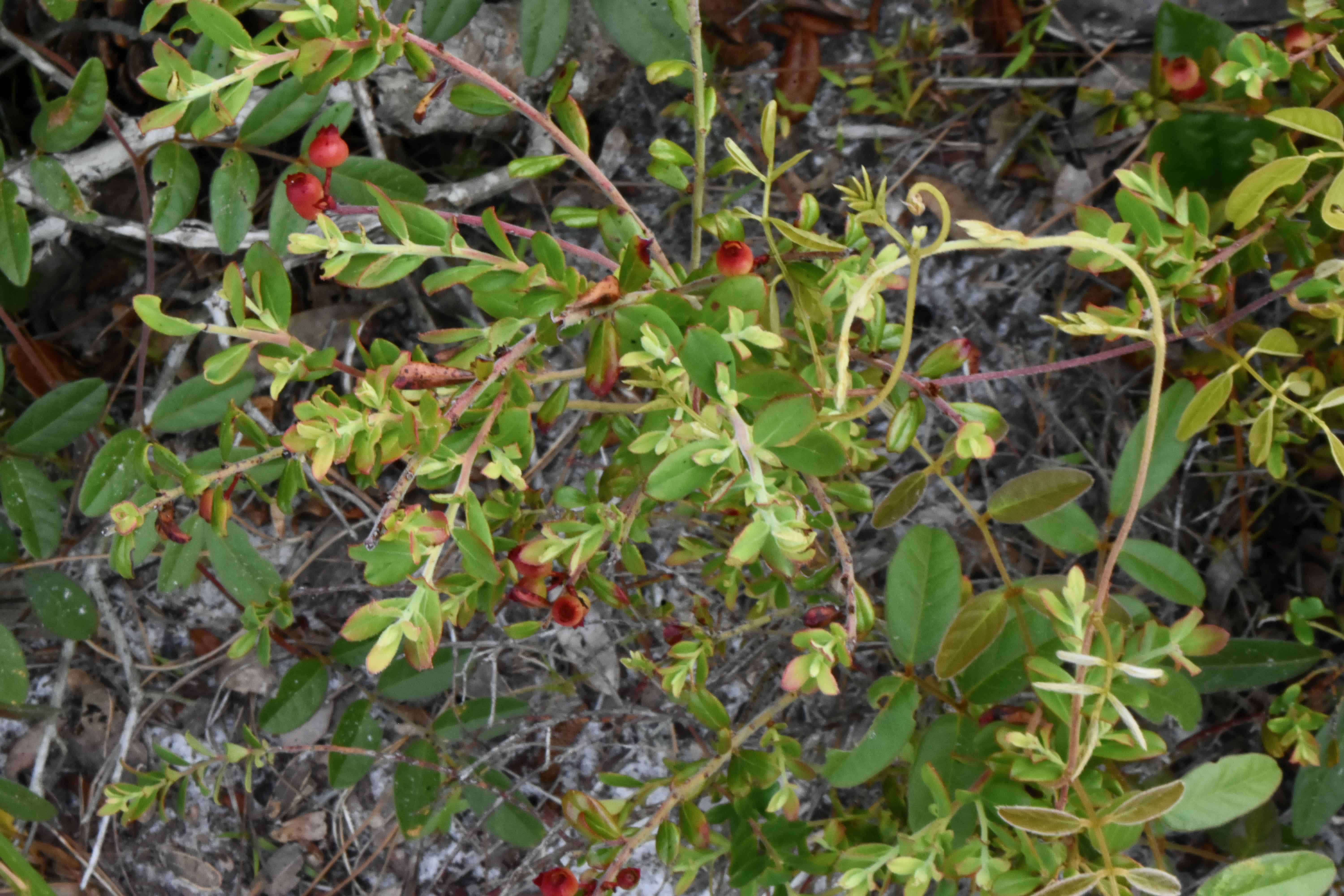
Darrow's blueberry, photographed at Blue Spring State Park, Orange City, Volusia County, in May 2023
There are some 14 species of blueberries native to North America. It’s fitting that one of them is named in honor of one of the greatest horticulturalists that this country has ever produced and probably the foremost expert of his day on berries.
We’re talking about George McMillan Darrow and Darrow’s blueberry, Vaccinium darrowii. The name makes all the sense since it was Darrow, working with a colleague at the U.S. Department of Agriculture, who recognized his namesake shrub as a separate species and first cultivated it. Before Darrow’s work, it was classified as a variety of shiny blueberry, Vaccinium myrsinites.
Darrow’s is a Florida native, found throughout much of the Panhandle and Peninsula. It is rare in South Florida, found in a handful of conservation areas mostly in Charlotte and Collier counties. It has been found in Royal Palm Beach Pines Natural Area in Palm Beach County, the only eastern site, according to the Institute for Regional Conservation. The IRC considers Darrow’s to be critically imperiled within South Florida. It is not listed by any federal or state agency, however.
Darrow’s is also found in Georgia, Alabama, Mississippi and Louisiana, mainly in coastal plain counties.
It is a small shrub, reaching maybe two feet tall with a two feet spread. It will send out rhizomes that can create large patches of clones. The leaves are small, blue-green and stay on the plant throughout the year. New growth at the tips are a beautiful pinkish-purple and stand out in contrast with older foliage.
The flowers are white with pink tones, urn-shaped typical of its family, and bloom as early as February in Florida, continuing through spring. The flowers give way to small green berries that turn pink and finally blue-black when ripe. Birds and small mammals (along with us humans) will munch on the sweet, ripe berries.
Darrow’s blueberry is found in pine flatwoods, scrubs and sand hills. Like blueberries generally, it needs acidic soils. It will take to sites with full or part sun and requires moist but not wet conditions.
Darrow’s and its shiny cousin are cultivated and used in landscaping, providing a two-fer of sorts. The foliage and the flowers offer good looks, the ripe berries good eats. It’s used to form low-hedges, borders or as a specimen plant in wildflower gardens.
The berries of Darrow’s are too small to be important commercially, but the plant does have valuable traits. To take advantage of those traits, Darrow’s has been crossed with a commercially important blueberry species, V. Corymbosum AKA highbush blueberry, to create an improved plant with the characteristics of both parents.
Until the early 1940s, Darrow’s was considered a subspecies or variety of shiny blueberry, a species commonly found throughout the Southeast, including South Florida. If you look at any formal listing of a particular species, you’ll see a person’s name attached to the right of the binomial, or scientific name. That’s the person who first described it in scientific terms and has given it its scientific name. In the case of Darrow’s blueberry, it’s Wendell Holmes Camp, a colleague of George Darrow. In our review of material available on the web we could not detail the exact relation between Darrow and Camp and the nature of the research that lead the two men to question the taxonomy of shiny blueberry.
In fact it took a bit of detective work to connect George McMillan Darrow with his namesake blueberry. Most literature we found on the blueberry we found don’t. The one exception: Florida Ethnobotany by the late eminent botanist, Daniel Austin. It might seem trivial, but if it was important enough for Camp to recognize Darrow, it was important to us to track down the connection as best we reasonably could.
Darrow’s blueberry is also known as evergreen blueberry and glaucous blueberry. It is a member of Ericaceae, the heath family.
